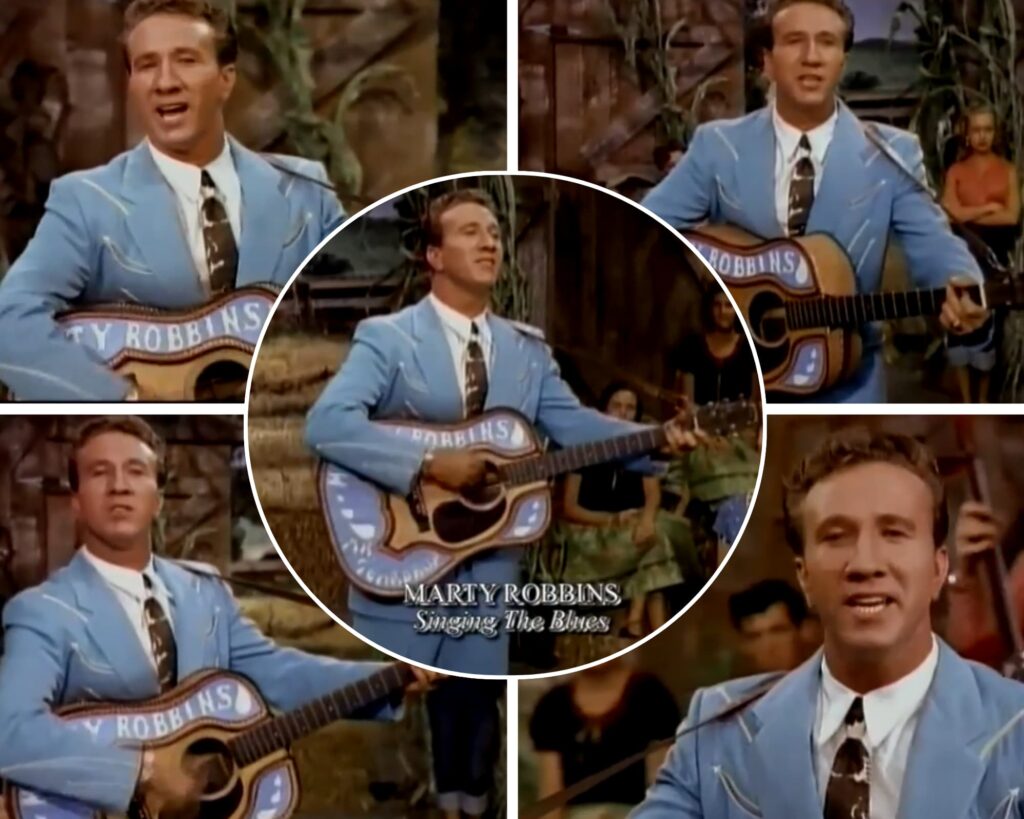
“Singing the Blues” is a song about longing and sorrow in the face of lost love.
In the mid-1950s, country music was undergoing a subtle yet significant shift. The raw, honky-tonk sound that had defined the genre for a decade was beginning to soften, paving the way for a more polished, pop-oriented style. One artist who navigated this transition with remarkable grace was Marty Robbins. A masterful storyteller with a smooth, effortless baritone, Robbins had already established himself as a rising star, but it was in 1956 that he would release a song that not only cemented his place in country music history but also crossed over to become a massive pop hit: “Singing the Blues.”
The song, written by Melvin Endsley, arrived on the scene at a time when heartache was a universal theme, but the way Robbins delivered it felt fresh and deeply relatable. It wasn’t a mournful, tear-in-your-beer lament; instead, it was a gentle, almost conversational reflection on the emptiness that follows a breakup. The song’s melody, with its jaunty, almost upbeat feel, creates a striking contrast with the melancholic lyrics, a juxtaposition that makes the sorrow feel even more profound. You can almost see Robbins sitting on a porch swing on a warm summer evening, a gentle breeze rustling through the trees, as he casually recounts his feelings to a friend.
When “Singing the Blues” was released, it was an immediate sensation. It climbed the charts with impressive speed, reaching the coveted number one spot on the Billboard Country & Western chart, where it stayed for an astonishing 13 weeks. But its success didn’t stop there. In a rare and remarkable crossover feat for a country artist at the time, the song also peaked at number 1 on the Billboard’s pop charts, a testament to its universal appeal. It was a song that transcended genre boundaries, connecting with listeners from all walks of life who had experienced the familiar ache of a broken heart.
The story behind the song is one of quiet serendipity. Melvin Endsley, a young songwriter at the time, was playing around with a simple, catchy tune when he wrote the lyrics. He was a fan of Robbins and had hoped the country star would record it. The song found its way to Robbins, who instantly saw its potential. He recorded it with his signature blend of sincerity and warmth, backed by a simple yet effective arrangement that put his voice front and center. The result was a timeless classic, a song that felt both deeply personal and universally understood.
In the decades since its release, “Singing the Blues” has become more than just a song; it’s a a time capsule, a reminder of a simpler era when a heartfelt melody and a simple truth were all you needed to touch a million hearts. The song’s enduring legacy is a testament to the power of a well-crafted lyric and a genuine performance. It’s a song that speaks to the quiet sorrow we all carry, the kind that doesn’t shout or rage, but instead lingers in the background, a gentle hum of sadness that reminds us of a love that once was. For many of us, hearing those first few notes takes us back to a different time, a time of young love and innocent heartbreak, a time when a song like “Singing the Blues” could capture the entire spectrum of human emotion in a little over two minutes.